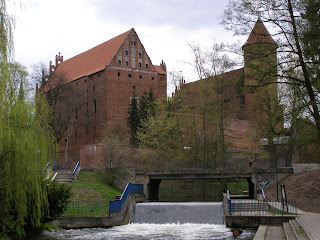 The Ilyushin Il-12 was a Soviet twin-engine aircraft designed for private airline and military usage. Development of the Il-12 began in the autumn of 1943. On 1 May 1947, the Il-12 was revealed to the public. It was part of a group of aircraft that participated in the annual May Day flyby over Red Square in Moscow. In June 1947 the Il-12 was used for its first passenger service with Aeroflot. Its first international run was the Moscow-Sofia route in 1948. Poland was the first export customer for the Il-12. LOT Polish Airlines placed an order for five Il-12B's. The planes were first seen at the Poznan Fair in Poland in the spring of 1948.
The Ilyushin Il-12 was a Soviet twin-engine aircraft designed for private airline and military usage. Development of the Il-12 began in the autumn of 1943. On 1 May 1947, the Il-12 was revealed to the public. It was part of a group of aircraft that participated in the annual May Day flyby over Red Square in Moscow. In June 1947 the Il-12 was used for its first passenger service with Aeroflot. Its first international run was the Moscow-Sofia route in 1948. Poland was the first export customer for the Il-12. LOT Polish Airlines placed an order for five Il-12B's. The planes were first seen at the Poznan Fair in Poland in the spring of 1948.
***
On 9 July 1954 Poland issued a set of six Airmail stamps. Five of the stamps were designed by Czeslaw Slania. He also engraved two stamps in the set. Interestingly, Slania submitted designs for all six of the stamps. Each stamp depicts an Il-12B flying over a landmark of Poland.
The 60gr stamp depicts an Il-12B flying over Paczkow Castle. This stamp was designed by Slania and engraved by J. Miller.
***
The 80gr stamp depicts an Il-12B flying over Kazimierz Dolny. This stamp was designed and engraved by Czeslaw Slania.
***
The 1,15zl stamp depicts an Il-12B flying over Wawel Castle, Krakow. This stamp was designed by Czeslaw Slania and engraved by Stefan Lukaszewski.
***
The 1,50zl stamp depicts an Il-12B flying over City Hall, Wroclaw. This stamp was designed by B. Brandt and engraved by Czeslaw Slania.
***
The 1,55zl stamp depicts an Il-12B flying over Lazienki Park, Warsaw. This stamp was designed by Czeslaw Slania and engraved by B. Brandt. Interestingly, this is the opposite engraver/designer order to the previous stamp.
***
The 1,95zt stamp depicts an Il-12B flying over Krakow Gate, Lublin. This stamp was designed by Czeslaw Slania and engraved by M.R. Polak (Slania's mentor).
Each of these amazing stamps deserves a blog of its own, which I plan to do in the near future. So keep an eye out.
Until next time...
Stay Slania Crazy!























